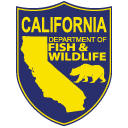
photo courtesy MPA Collaborative Network
While Los Angeles County is home to 13 of California’s 124 marine protected areas (MPAs), only four of those can be easily accessed from the mainland. The remaining nine MPAs surround Santa Catalina Island, known simply as “Catalina,” and can be reached via ferry, boat, helicopter, or private aircraft.

(click to enlarge)
map courtesy Los Angeles MPA Collaborative
Catalina is one of eight islands off the Southern California coast known collectively as the Channel Islands. Of these eight islands, six have at least one MPA along their coast, but Catalina has the highest share of MPAs per island with nine MPAs. In total, these nine MPAs protect around 22 square miles of habitat, including nearshore habitat like sandy beaches, rocky shores, and surfgrass beds, as well as offshore kelp forests, rocky reefs, and pinnacles at depths greater than 2,600 feet!
As with all of California’s MPAs, the nine MPAs surrounding Catalina Island are managed by the California Department of Fish and Wildlife (CDFW), but the public also has a significant investment in their overall management. To aid in the communication between the public and managing agencies, Calla Allison founded the MPA Collaborative Network in 2013 to provide a venue for the public to gather regularly to discuss their local MPAs.
The MPA Collaborative Network is comprised of 14 coastal collaboratives statewide. Los Angeles County is unique in that it is the only county with two collaboratives. The four mainland MPAs are the focus of the Los Angeles MPA Collaborative, while the remaining nine MPAs are the focus of the Catalina Island MPA Collaborative.
Catalina Island and the MPAs themselves provide plenty of opportunities to enjoy the Pacific Ocean. Easily accessible from Avalon, the only incorporated city on any of the Channel Islands, Casino Point State Marine Conservation Area (SMCA) is the perfect place to go scuba diving or snorkeling! A bit further west, the adjoining Blue Cavern SMCAs protect the waters just offshore from the University of Southern California Wrigley Marine Science Center. This science center frequently hosts a wide range of marine scientists from college students to experienced marine biologists who have used the protected waters of Blue Cavern Onshore SMCA as a living laboratory. Then on the backside of Catalina, the neighboring Farnsworth SMCAs protect tall rocky pinnacles that are covered with purple hydrocoral not commonly seen elsewhere.

Currently co-chaired by Lauren Czarnecki-Oudin (from the USC Wrigley Institute), Hillary Holt, and Rebekah Rudy (both from the Catalina Island Conservatory), the Catalina Island MPA Collaborative brings together a diverse array of stakeholders to help raise awareness of the island’s MPAs. “The Catalina Collaborative brings together local Island stakeholders to make sure the community is directing the needs of their MPAs,” says co-chair Holt. For example, collaborative members created unique, informative, and visually pleasing regulatory signs that are installed near popular shore-based access points for the respective MPAs (like the Arrow Point to Lion Head Point SMCA sign included in this story). Members have also created an informative brochure regarding their local MPAs that can be displayed and distributed at Catalina Island businesses, non-profit organizations, and public agencies.
The Catalina Island MPA Collaborative works closely with their partners at the Los Angeles MPA Collaborative, and co-developed a training program known as the “MPA Speaker Series”. This program aims to train speakers about how to communicate information regarding MPAs to help raise awareness with the public, as well as specific boating, angling, and diving communities. “With so many visitors to the Catalina MPAs from the mainland, it was ideal to partner the LA and Catalina MPA Collaboratives,” says Linda Chilton, co-chair of the Los Angeles MPA Collaborative. “The speakers training tool supports community members and professionals as they bring their experience and sense of place to educating others about the importance of MPAs.”
As with all collaboratives, anyone is welcome to join the Catalina Island MPA Collaborative. While it is normally a bit difficult to attend meetings unless you are on the island itself, due to the COVID-19 pandemic, meetings have transitioned to a virtual format for the time being. Members are always looking for new ways to connect the local community with the Catalina Island MPAs, so if you have any ideas or questions about the Catalina Island MPA Collaborative, feel free to attend one of their meetings or reach out to one of the current co-chairs (Lauren Czarnecki-Oudin, Rebekah Rudy, or Hillary Holt) for more information. If you are interested in joining a different collaborative, visit the MPA Collaborative Network website to find one near you!
post by Amanda Van Diggelen, CDFW Environmental Scientist
 This article is part of a series featuring California MPA Collaboratives. Read archived MPA News articles and the series Exploring California’s MPAs for more stories and information about California’s marine protected areas!
This article is part of a series featuring California MPA Collaboratives. Read archived MPA News articles and the series Exploring California’s MPAs for more stories and information about California’s marine protected areas!




